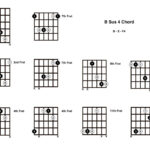The question “When Was The Guitar Created?” is more complex than it initially appears. While pinpointing an exact birthdate for the guitar is impossible, tracing its ancestry reveals a rich and fascinating history stretching back millennia. The instruments we recognize as precursors to the modern guitar have evolved across civilizations, leaving behind a legacy of musical innovation and cultural exchange. Let’s delve into the historical timeline to uncover the origins of this beloved instrument.
Ancient Roots: Lutes and Early Stringed Instruments
Long before the emergence of what we definitively call a guitar, stringed instruments with lute-like characteristics flourished in ancient civilizations. Archaeological evidence provides compelling insights into these early relatives.
Around 3000 BCE, during the Uruk period in Mesopotamia (modern-day Iraq), a cylinder seal unearthed by Dr. Dominique Collon, now housed in the British Museum, depicts a female musician playing a stringed instrument. This image, dating back over 5000 years, represents one of the oldest pictorial records of a lute-like instrument. These instruments, in both short and long-neck variations, became prevalent throughout Mesopotamia and ancient Egypt, appearing in artifacts housed in museums like the Metropolitan Museum of New York and the British Museum. These early stringed instruments were integral to the musical traditions of numerous ancient cultures, including the Sumerians, Akkadians, Babylonians, Egyptians, Greeks, and Romans, highlighting a shared heritage of musical expression across the Mediterranean and Middle East.
Alt text: An ancient Egyptian relief carving depicting a harpist playing for the god Ra, showcasing early stringed instrument use in religious music.
Medieval Europe: The Arrival of Guitar-like Instruments
Moving forward in history, the medieval period in Europe (500 – 1400 AD) witnessed the development of instruments that more closely resemble the guitar. During this era, instruments with 3, 4, and 5 strings were already in use. Two significant types emerged in Spain: the Guitarra Latina and the Guitarra Morisca. The Guitarra Latina, believed to have European origins, featured curved sides and is considered a direct ancestor of the guitar. The Guitarra Morisca, introduced by the Moors, possessed an oval soundbox and multiple sound holes.
By 1349, historical records document the Duke of Normandy employing musicians who played instruments identified as Guiterre Morische (Moorish Guitar) and Guitarra Latina (Latin Guitar). While the Guiterre Morische evolved into the European lute and the Arabic oud, it is the Guitarra Latina that holds the most significant place in the guitar’s lineage.
Alt text: A comparative illustration from circa 1320 showing a guitarra latina with curved sides and a guitarra morisca with an oval body, highlighting the distinct forms of early guitar-like instruments in medieval Spain.
The First Guitars: Tracing the Name
The term “guitar” itself begins to appear in historical records around the 13th century. The first documented mention of a “guitar” dates back to 1265. This marks a crucial point in the instrument’s evolution, signifying the growing recognition of a distinct instrument that was developing towards its modern form.
Conclusion: An Ongoing Evolution
In conclusion, while pinpointing the exact date of the guitar’s “creation” is not possible, its history is a testament to the long and winding path of musical instrument development. From the ancient lute-like instruments of Mesopotamia and Egypt to the Guitarra Latina of medieval Spain, the guitar’s origins are deeply rooted in a rich tapestry of cultural exchange and musical innovation. The instruments of the past laid the foundation for the guitar we know and love today, demonstrating an evolution rather than a singular invention. The story of “when was the guitar created?” is therefore a journey through time, tracing the footsteps of its ancestors and celebrating the enduring legacy of stringed instruments.

